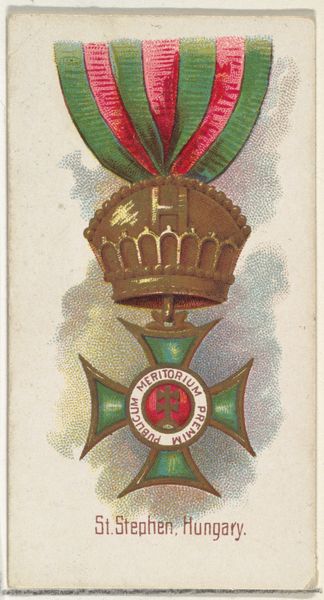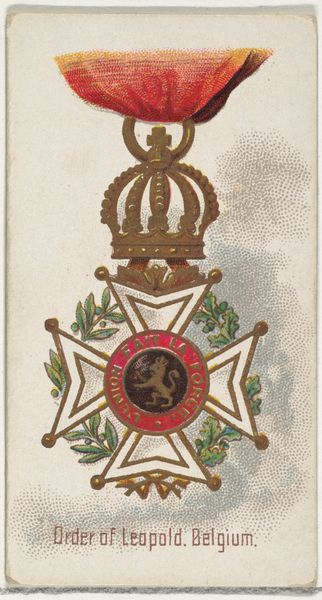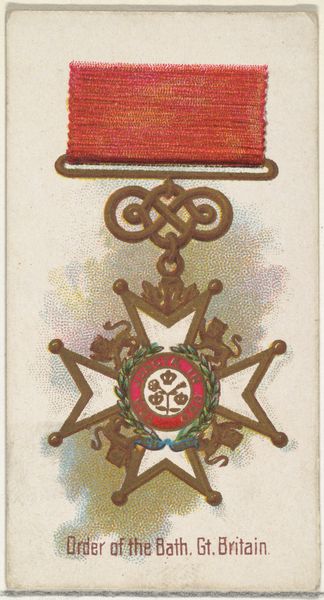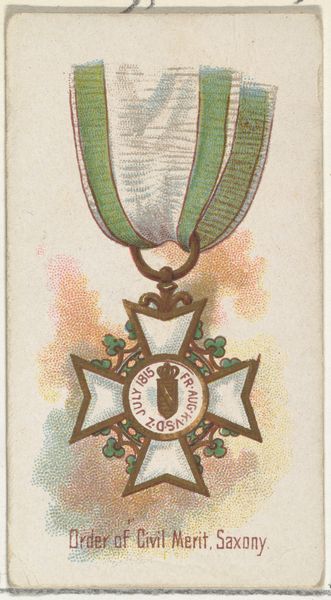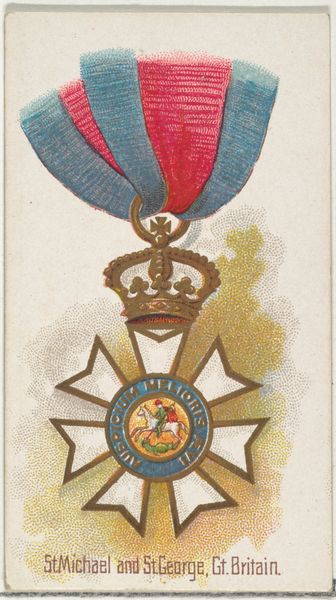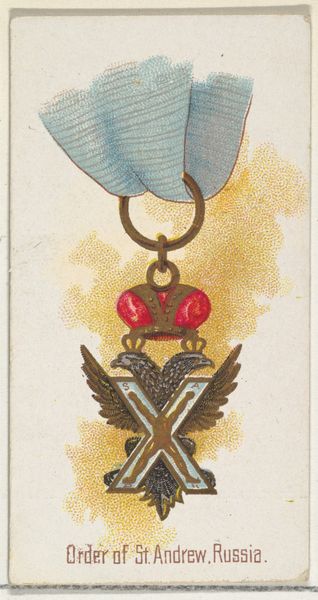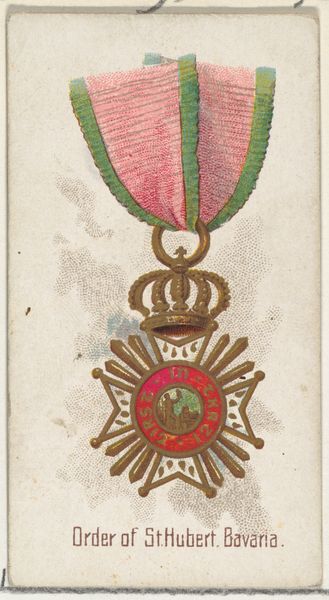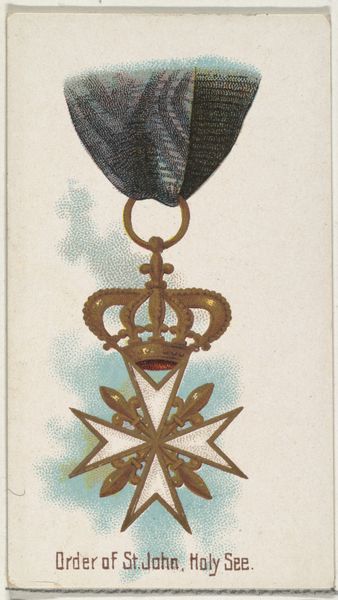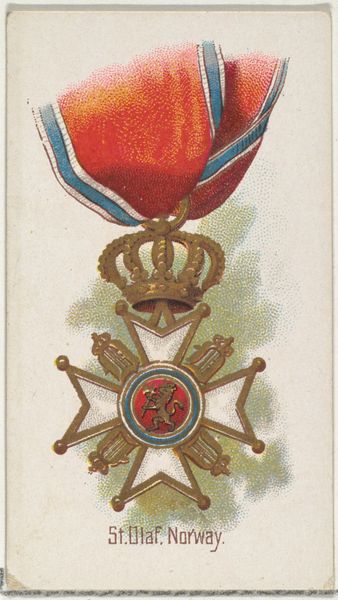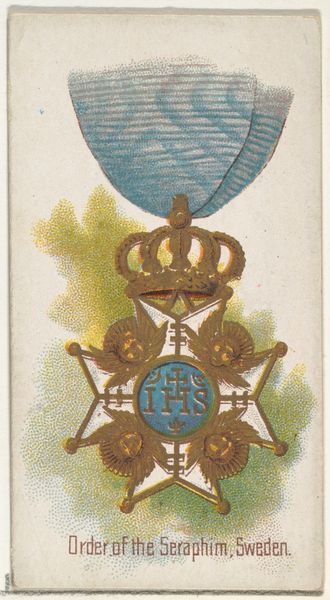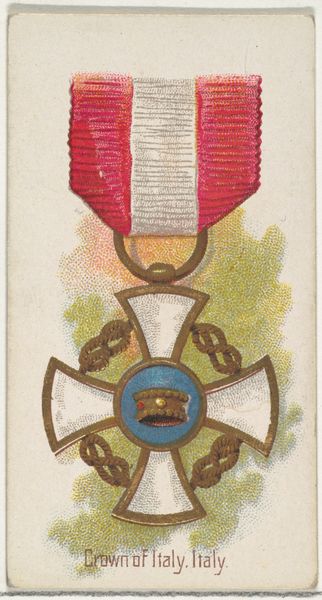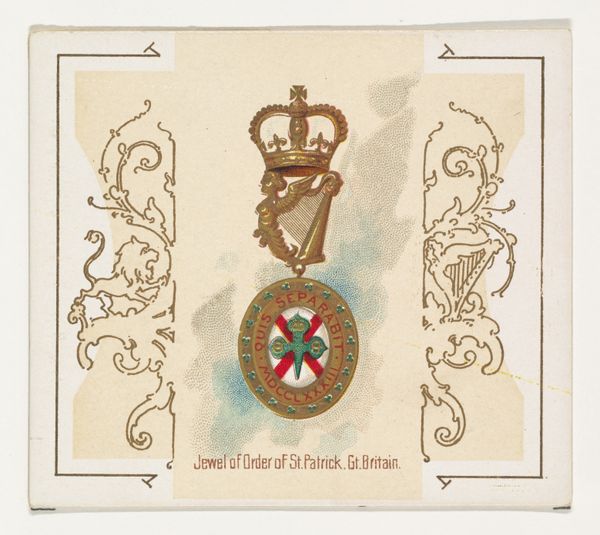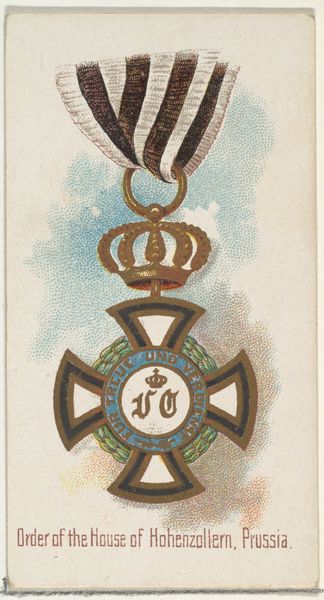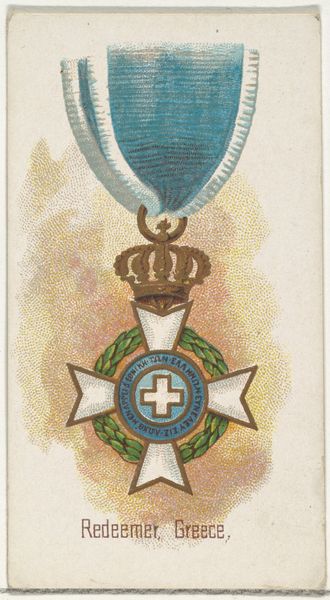
Jewel of the Order of St. Patrick, Great Britain, from the World's Decorations series (N30) for Allen & Ginter Cigarettes 1890
0:00
0:00
drawing, coloured-pencil, print, paper, watercolor
#
medal
#
drawing
#
toned paper
#
coloured-pencil
# print
#
paper
#
watercolor
#
coloured pencil
#
watercolour illustration
#
golden font
#
decorative-art
Dimensions: Sheet: 2 3/4 x 1 1/2 in. (7 x 3.8 cm)
Copyright: Public Domain
Curator: This is a print dating back to 1890, one of the "World's Decorations" series created for Allen & Ginter Cigarettes, and currently residing at the Metropolitan Museum of Art. It presents the Jewel of the Order of St. Patrick of Great Britain, rendered with watercolor and coloured pencil on paper. Editor: The first thing that strikes me is its miniature scale and jewel-like precision. It’s immediately evident it's meant to convey prestige. What do you make of that tension between the elevated subject matter and its function as cigarette card? Curator: Precisely. The tension underscores the material reality of late 19th-century culture: tobacco companies leveraging aristocratic symbols for mass consumption. The detailed craftsmanship elevated the status of an everyday, mass produced commodity. Notice the toned paper? It adds to a faux antique aesthetic, lending an air of timelessness. Editor: The golden harp beneath the crown...it is a classic symbol of Ireland, representing the arts and national identity. And the shamrock at the centre, naturally! Its history stretches back centuries; one can almost hear the echoes of Gaelic traditions. Curator: Yes, the shamrock is cleverly juxtaposed with the cross, hinting at the intertwined histories of Irish identity, British rule and faith in the late 1800s. Its design speaks to British Imperial visual strategies during that era. Editor: The Latin motto inscribed around the medal—"Quis separabit?"—who shall separate us?—that projects a defiant spirit against any possible ruptures. Do you read it as hopeful or cautionary? Curator: The motto itself can be considered from the point of view of labour history. The print depended on specialized artists and colourists who possessed skill sets not necessarily considered prestigious within ‘fine art’ circles at that period. Allen & Ginter aimed at capturing as much consumer market share by associating products to aspiration and even highbrow aesthetic interest. Editor: A reminder that images always carry more weight than they immediately seem. Looking closer always rewards curiosity, even when it comes to the details imprinted in cigarette cards! Curator: It really does give us so much to chew on with respect to how it relates to labor history and artistic enterprise in popular culture.
Comments
No comments
Be the first to comment and join the conversation on the ultimate creative platform.
